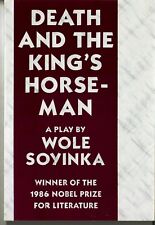"Nobel Prize in Chemistry" George Olah Hand Signed 3.5X2 Card For Sale

When you click on links to various merchants on this site and make a purchase, this can result in this site earning a commission. Affiliate programs and affiliations include, but are not limited to, the eBay Partner Network.
"Nobel Prize in Chemistry" George Olah Hand Signed 3.5X2 Card:
$99.99
Up for sale the "Nobel Prize in Chemistry" George Olah Hand Signed 3.5X2 Card.
ES-1061
George Andrew Olah (born Oláh György; May 22, 1927 – March 8, 2017) was a Hungarian and American chemist. His research involved the generation and reactivity of carbocations via superacids. For this research, Olah was awarded a Nobel Prize in Chemistry in 1994 "for his contribution to carbocation chemistry." He was also awarded the Priestley Medal, the highest honor granted by the American Chemical Society and F.A. Cotton Medal for Excellence in Chemical Research of the American Chemical Society in 1996. According to György Marx he was one of The Martians. Olah was born in Budapest, Hungary, on May 22, 1927, to a Jewish couple, Magda (Krasznai) and Gyula Oláh, a lawyer. After the high school of Budapesti Piarista Gimnazium (Scolopi fathers), he studied under organic chemist Géza Zemplén at the Technical University of Budapest, now the Budapest University of Technology and Economics, where he earned M.S. and Ph.D degrees in Chemical Engineering. From 1949 through 1954, he taught at the school as a professor of organic chemistry. In the subsequent two years, from 1954–1956, he worked at the Research Institute of the Hungarian Academy of Sciences, where he was Associate Scientific Director and Head of the Department of Organic Chemistry. As a result of the 1956 Hungarian Revolution, he and his family moved briefly to England and then to Canada, where he joined Dow Chemical in Sarnia, Ontario, with another Hungarian chemist, Stephen J. Kuhn. Olah's pioneering work on carbocations started during his eight years with Dow. In 1965, he returned to academia at Case Western Reserve University in Cleveland, Ohio, chairing the Department of Chemistry from 1965 to 1969, and from 1967 through 1977 he was the C. F. Maybery Distinguished Professor of Research in Chemistry. In 1971, Olah became a naturalized citizen of the United States. He then moved to the University of Southern California in 1977. At USC, Olah was a distinguished professor and the director of the Loker Hydrocarbon Research Institute. Starting in 1980, he served as the Distinguished Donald P. and Katherine B. Loker Professor of Chemistry and later became a distinguished professor in USC's School of Engineering. In 1994, Olah was awarded the Nobel Prize in Chemistry "for his contribution to carbocation chemistry". In particular, Olah's search for stable nonclassical carbocations led to the discovery of protonated methane stabilized by superacids, like FSO3H-SbF5 ("Magic Acid").
CH4 + H+ → CH5+
Because these cations were able to be stabilized, scientists could now use infrared spectroscopy and nuclear magnetic resonance (NMR) spectroscopy to study them in greater depth, as well as use them as catalysts in organic synthesis reactions. Olah, with Canadian chemist Saul Winstein, was also involved in a career-long battle with Herbert C. Brown of Purdue over the existence of so-called "nonclassical" carbocations – such as the norbornyl cation, which can be depicted as cationic character delocalized over several bonds. Olah's studies of the cation with NMR spectroscopy provided more evidence suggesting that Winstein's model of the non-classical cation, "featuring a pair of [delocalized] electrons smeared between three carbon atoms," was correct. In 1997, the Olah family formed an endowment fund (the George A. Olah Endowment) which grants annual awards to outstanding chemists, including the George A. Olah Award in Hydrocarbon or Petroleum Chemistry, formerly known as the ACS Award in Petroleum Chemistry. The awards are selected and administered by the American Chemical Society. Later in his career, his research shifted from hydrocarbons and their transformation into fuel to the methanol economy, namely generating methanol from methane. He joined with Robert Zubrin, Anne Korin, and James Woolsey in promoting a flexible-fuel mandate initiative. In 2005, Olah wrote an essay promoting the methanol economy in which he suggested that methanol could be produced from hydrogen gas (H2) and industrially derived or atmospheric carbon dioxide (CO2), using energy from renewable sources to power the production

Related Items:
"Nobel Prize in Medicine" James Watson Hand Signed Book COA
$399.99
"Nobel Prize in Chemistry" Paul Flory Hand Signed Album Page COA
$99.99
RARE “Nobel Prize in Literature" Wole Soyinka Signed Book
$149.99



